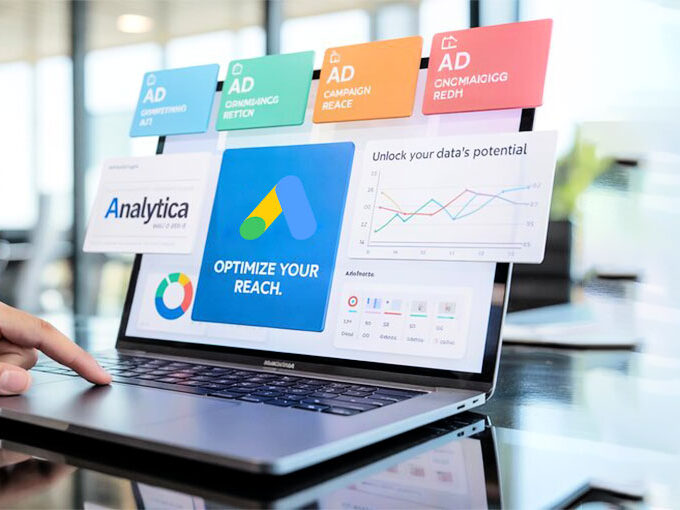What can managers do to encourage employees who are struggling to improve? This issue has become more relevant since employers are seeking methods to evaluate the effectiveness of remote workers. A performance improvement plan (PIP) will give employees a roadmap to increased success.
However, the plans for improving performance aren’t without controversy. Employees generally view performance reviews with disdain, viewing them as yet another step closer to dismissal. Studies indicate that many employees perceive performance reviews as biased or inaccurate and therefore feel no motivation to work harder in response.
That means that managers who use PIPs must be proactive in communicating with employees in a way that resonates. Here, we explore the most effective ways to design and execute a performance improvement plan without causing friction with employees.
What Is a Performance Improvement Plan?
A performance improvement plan is an official document to help employees meet their expectations they are trying to reach.
This type of plan will provide a transparent appraisal of performance, providing employees with an understanding of the gaps in their performance and areas in which they’re not performing to their best. Then the plan will outline specific actions to help them perform better. A PIP will establish a clear timetable with goals for intermediaries to guide employees and increase performance.
It also includes explicit punishments for workers who fail to perform to the standards. This could range from discipline to dismissal from employment. Employers who receive PIPs need to acknowledge their mistakes to develop into the employees that the company requires.
Also read: 13 Tools to Analysis Employee Performance
When Should a Performance Improvement Plan be Implemented?
Employers can customize the performance improvement plan template to meet the needs of any issue. For instance, the PIP could be focused on improving the quality of work and goal-setting, or achieving growth targets. When properly carried out, an employee improvement plan can be a boon for people who struggle. It will give employees precise instructions on how to make improvements and will provide a specific measurement of improvement.
To be successful, PIPs must be driven by a genuine desire to help employees enhance their performance. Because of their reputation, they can cause employees to be anxious. That’s why managers who issue PPIs must be prepared to communicate clearly about expectations, and regularly check in and support employees. All of this can improve the employees’ morale..
However, PIPs aren’t only available to employees who struggle in their jobs. They can also help structure the work environment for employees who feel unhappy. A PIP can help prepare an employee to transition into a higher-level position or to move into a later job that is more suitable for them.
Benefits of a Performance Improvement Plan
Performance improvement plans facilitate employee mobility and personal development. They can therefore benefit both the employee and the employer. The Performance appraisal benefits are endless.
Culture of Accountability
If employers invest in improving their employees, rather than giving them a pass for mistakes or poor performance, employees are more involved with the business. The use of a performance review form gives employees the ability to make modifications and also allows managers to establish an environment that promotes a high-performance environment.
Save Time and Money
By addressing and resolving issues with your performance improvement plan and other tools to manage performance, employers can boost productivity at work and ensure that their employees are on track. PIPs can be more efficient than annual performance appraisals they are taken seriously by employees.
Furthermore, PIPs provide employees with an opportunity to re-engage and reduce turnover. It will also help employers save money by letting workers go and train new hires. They will also avoid the expense of lower morale when firing employees.
Reduce Liability
PIPs are a formal document that reveals the employer’s dissatisfaction with the employee’s performance. This makes it harder for employees to prevail in an action for unfair or unlawful termination later down the road. Although this is a protection for employers, it’s the reason why employees feel uncomfortable receiving a PIP.
How to Write a Performance Improvement Plan
The most essential features of a performance improvement plan are the form for evaluating performance. It is a written document that employers can use with employees to note objectives and a timetable for improvement. Here are a few important considerations to consider when creating the employee assessment form.
Define Acceptable Performance
How can a top-performing employee be performing this job? Instead of looking at what they don’t need, employers must first be aware of what they actually need to know. After that, they should look backwards to identify where the employee is falling short and what they could do to enhance their performance.
Set Measurable Goals
Provide the employee with an understanding of your company’s performance system. What are they required to accomplish to be better? Utilize the SMART framework (SMART Measurable and Attainable and Relevant, Time-based) to establish goals that employees can achieve. Track employees’ performance metrics and incorporate feedback. If they complain that they have unrealistic expectations, there could be an explanation for this.
Outline Resources and Support
What are the resources accessible to employees looking to learn new skills? Managers can provide support via training and coaching performance. In addition, they can help employees ask their colleagues for help. Think about how to get to the root cause of the issue.
Schedule Check-ins
One of the most important parts of the performance appraisal is scheduling regular meetings with the employee and the manager. The manager should take these meetings to exercise ongoing performance control and to ensure that employees are meeting their incremental goals and are developing in accordance with the PIP. Employees can discuss any concerns or doubts.
State the Consequences
It’s a fact. Although PIPs can assist employees in reaching their full potential, the chance is that they won’t. An employee performance improvement plan should outline the consequences of not achieving expectations.
By keeping these points in mind, a manager will be able to make an appropriate and clear PIP.
Performance Improvement Plan Best Practices
Although PIPs can assist struggling employees in improving their performance but the performance improvement plan process can create stress. What are the most effective practices for managing employee performance techniques to ensure that the PIP is completed smoothly?
Make a Plan
The first step is to create a plan. Plan a meeting with the employee’s manager and HR representative. Prepare what you’ll discuss ahead of time, and be sure to prepare the employee’s evaluation forms.
Listen to Your Employee
Let the employee respond with any ideas or suggestions. They will receive valuable feedback on the requirements of their job or other extenuating factors. Certain companies may provide employees with a self-appraisal survey to assess the way employees view their own performance over the last few months.
Find the Root Cause of the Issue
If an employee has shown poor performance, there’s a valid reason for it. The person was hired for their talents and behavior, which is why they’re not flinching out of spite. Do they struggle to comprehend the expectations of their job? Are they experiencing difficulties in their personal life that affect their performance? Investigate specific issues for targeted performance reviews and offer assistance accordingly.
Emphasize the Positive
Recognize the strengths of your employee and the impact they’ve had on the company. This can be an opportunity for employees to develop an individual improvement plan. Help them discover ways to boost their influence.
Provide Guidance
The supervisor’s evaluation can help employees better understand the business’s expectations. The goal-setting process should give employees an understanding of their path and help them reach goals.
Check-in Frequently
Keep track of the employee’s progress following the initial meeting. Are there improvements in line with the objectives for interim periods? Contacting them regularly will help keep employees engaged and in a positive direction. Give an employee review form for employees to review their own performance.
Also read: Annual Incentive Plan Guide for 2025: Motivate and Reward Employees
How to Respond to a Performance Improvement Plan
Employees tasked with discussing a performance improvement plan with their manager can find it intimidating and stressful, especially if a manager had previously raised improvements that didn’t seem urgent to the employee. The positive aspect? This evaluation of employees provides employees with an opportunity to improve their performance. What they do will either win the confidence of their bosses in the long term or further reduce confidence.
Be Honest with Yourself
It’s painful when your boss claims that your work isn’t up to standard, but it’s an excellent opportunity to reflect. Take note of how you’re performing. Are you occupied with other matters lately? Are you letting things go?
If your manager has asked you to perform an objective self-evaluation, think carefully about the best way to write performance reviews of yourself to ensure you can provide an objective view.
Make Your Job a Priority
It’s time to focus on the work. You must ensure that you have enough time to allow your work the attention it deserves. Your manager should know your strengths.
Seek Help when You Need It
Self-improvement isn’t easy. The good news is that an improvement plan for performance signifies that your company is interested in helping you improve in the right direction. If you think you’ve been treated unfairly in a performance improvement plan, make certain to speak with your supervisor about what you can do to improve it. Do not squabble over previous incidents. Instead, concentrate on the future and meet the goals you set. Be sure to take advantage of the resources that are available to you.
Stay Positive
While your self-esteem may be low, it’s still vital that you maintain an optimistic attitude. Demonstrate to your manager that you are willing and eager to implement any necessary adjustments. To sum it all up, don’t let little difficulties keep you from progressing!
Conclusion
Performance Improvement Plans offer more than a warning. Managers provide structured opportunities for growth by setting clear goals, offering support, and maintaining open communication, helping employees improve and regain confidence as a result.
Managers provide structured opportunities for growth by setting clear goals, offering support, and maintaining open communication, helping employees improve and regain confidence as a result.
FAQs
Can PIPs be used for remote employees?
Yes. In fact, remote employees may benefit from PIPs to set structured goals and ensure accountability when managers cannot monitor performance in-person.
What tools can help manage a Performance Improvement Plan?
Popular PIP tools include Lattice, BambooHR, SAP SuccessFactors, Trakstar, Zoho People, Workday, 15Five, and Kissflow HR Cloud. They help track goals, performance, and employee progress.
Can PIP tools be used for remote teams?
Yes. Tools like 15Five and Lattice are designed for remote or hybrid teams with continuous feedback, goal tracking, and check-ins.
What role does the manager play in a PIP?
The manager identifies performance gaps, sets clear goals, provides feedback, and monitors progress throughout the PIP process.










Leave a comment